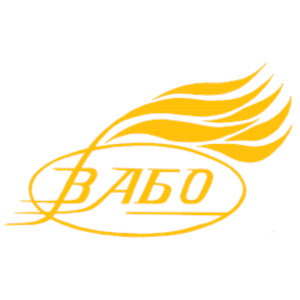ADAPTATION OF TEACHING STAFF TO BLENDED LEARNING IN PUBLIC ADMINISTRATION OF EDUCATION
DOI:
https://doi.org/10.32782/2786-5681-2024-1.13Keywords:
blended learning technologies, public administration of education, adaptationAbstract
The article is devoted to the problematic aspects of the adaptation of teaching staff to mixed technologies in the public administration of education. The models of mixed technologies in the public administration of education are distinguished and analyzed. Attention is focused on the problems that teachers and administrators face when using innovative technologies and promising vectors for the further implementation of mixed technologies in the public administration of education. It is emphasized that the figure of the teacher plays a key role in the educational process. After all, he has the knowledge and skills to organize the team’s activities, is able to pass on a certain set of knowledge to pupils, to contribute to the formation of personality, and the education of moral values. The purpose of the article is to study the process and factors affecting the adaptation of pedagogical personnel to mixed technologies in the field of public administration of education. Blended learning is a productive educational technology that needs to be comprehensively researched and implemented in the educational process and the field of public administration. The research methodology of this article is an analysis of the current state of the use of mixed technologies in the public administration of education and the determination of factors that affect the effectiveness of the adaptation of pedagogical personnel. For the field of public administration, the educational paradigm «Blended Learning» is used for different audiences: it can be the training of education seekers, and it can be trainings and corporate training of pedagogical personnel for the purpose of their self-development, professional development, or even establishing stable pedagogical communication for the purpose of holding meetings, pedagogical councils, consultations. The scientific novelty of the work lies in the fact that blended learning was investigated as a combination of the traditional contact format and the use of information and communication technologies, which requires a high level of organization and cooperation between various participants in the educational process. The role of the administrator and teacher becomes key to the successful implementation of such an approach. Blended learning technology, combining the advantages and disadvantages of traditional and remote forms of learning, has a number of features. A significant advantage of this technology is the variety of opportunities for interaction between the teacher and the learner, in which learning becomes the most effective. Such interaction creates a favorable environment for joint learning. Conclusions. One of the main problems in the implementation of the technology of mixed learning in the educational process is the unpreparedness of the teaching staff and public administrators to use them in their professional activities.
References
Гнатенко Т. С., Лисенко Н. В. Використання інноваційних технологій навчання у ЗВО в умовах змішаного навчання Health & Education. 2023. Вип. 1. С. 14–21. DOI: https://doi.org/10.32782/health-2023.1.3
Грушина І. Теоретичні та методологічні основи використання дистанційних технологій в контексті змішаного навчання Наукові записки [Кіровоградського державного педагогічного університету імені Володимира Винниченка]. Серія: Проблеми методики фізико-математичної і технологічної освіти. 2016. Вип. 10(1). С. 28–34.
Гуревич Р., Кадемія М. Змішане навчання й інноваційні технології підготовки майбутніх фахівців у вищих навчальних закладах Порівняльна професійна педагогіка. 2017. № 7(1). С. 106–112.
Дивак В., Юрченко Ю. Використання медіаінформаційних технологій у змішаному навчанні системи відкритої освіти Нова педагогічна думка. 2019. № 4. С. 38–41.
Кравченко І. Технологія змішаного навчання як інновація дистанційної освіти: переваги та ризики. Гірська школа Українських Карпат. 2016. № 15. С. 237–240.
Осадча К. П., Осадчий В. В., Спірін О.М та ін. Використання технологій змішаного та дистанційного навчання у педагогічній підготовці бакалаврів професійної освіти Інноваційна педагогіка. 2022. Вип. 46. С. 155–160.
Сікора Я. Б. Адаптація як об’єкт наукового дослідження: психолого-педагогічний аналіз Науковий вісник Ужгородського університету. Серія : Педагогіка. Соціальна робота. 2022. Вип. 2. С. 135–139.
Рекомендації щодо впровадження змішаного навчання у закладах фахової передвищої та вищої освіти URL: https://mon.gov.ua/ua/osvita/visha-osvita/rekomendacij-shodo-vprovadzhennya-zmishanogo-navchannya-u-zakladahfahovoyi-peredvishoyi-ta-vishoyi-osviti (дата звернення: 01.11.2023)
Сушенцева Л. Інноваційні педагогічні технології у процесі підготовки майбутнього професійно мобільного педагога професійного навчання у навчальному закладі (теоретичний аспект). Науковi записки. 2016. Випуск 9(ІII). С. 65–70.
Теорія та практика змішаного навчання : монографія / [Кухаренко В. М., Березенська С. М., Бугайчук К. Л. та ін.] ; за ред. В. М. Кухаренка. Харків : Міськдрук, НТУ ХПІ, 2016. 284 с.
Фандєєва А. Є. Змішане навчання як технологія змін і трансформації Народна освіта. 2017. Вип. 2. С. 4–9.
Nagel D. The Disruption of Blended Trasforming Education Through Technology. 2011. 07/06 URL: https://thejournal.com/Articles/2011/07/06/The-Disruption-of-Blended-Learning.aspx (дата звернення: 01.11.2023)
Hofmann J. Five Trends Driving Blended Learning. Getting InSync. 2014. 28 June. URL: https://blog.insynctraining.com/five-trends-driving-blended-learning (дата звернення: 01.11.2023)
Про повну загальну середню освіту : Закон України від 16. січ. 2020 р. № 463-ІХ. URL: https://zakon.rada.gov.ua/laws/show/463-20#Text
Про затвердження Положення про електронні освітні ресурси: Наказ МОНУ від 01.10.2012 № 1060. URL: https://zakon.rada.gov.ua/laws/show/z1695-12#T







